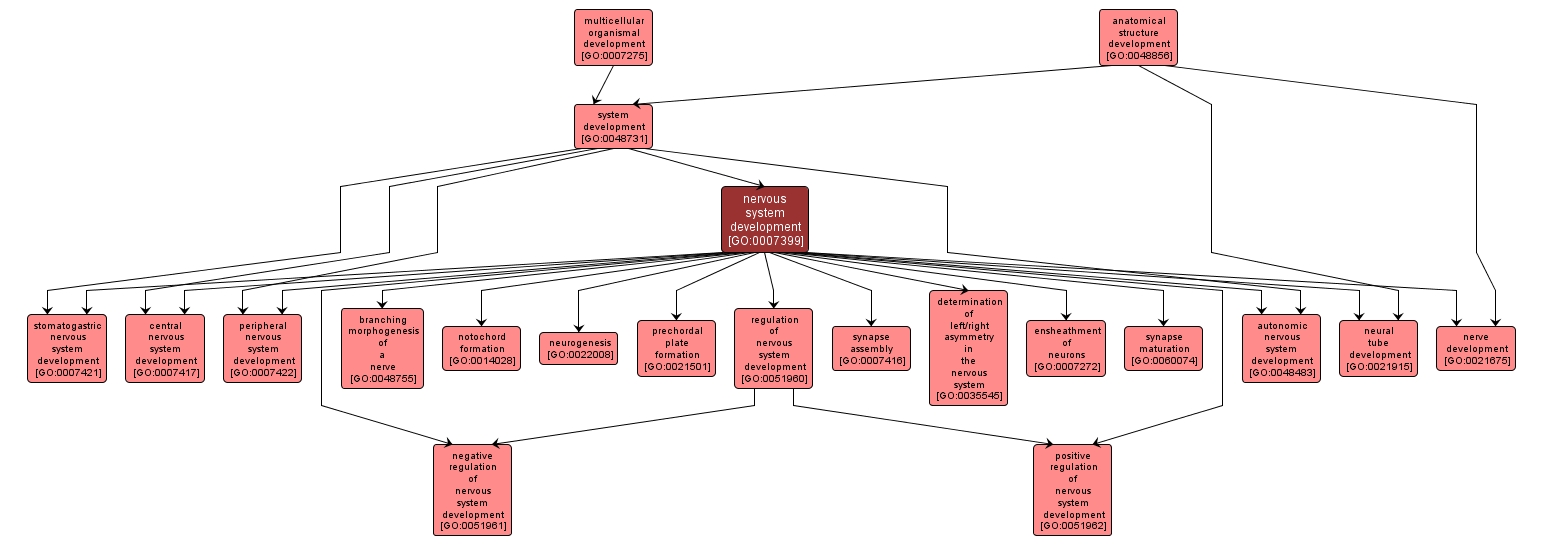GO TERM SUMMARY
|
| Name: |
nervous system development |
| Acc: |
GO:0007399 |
| Aspect: |
Biological Process |
| Desc: |
The process whose specific outcome is the progression of nervous tissue over time, from its formation to its mature state. |
| Synonyms:
|
|

|
INTERACTIVE GO GRAPH
|














